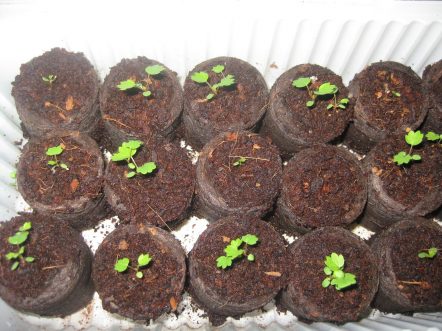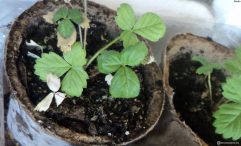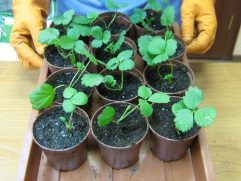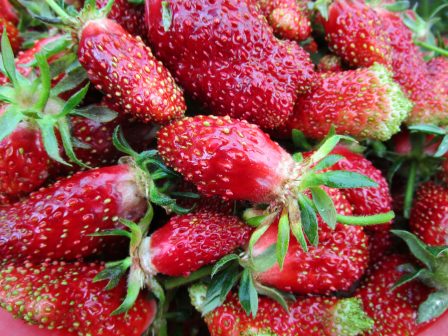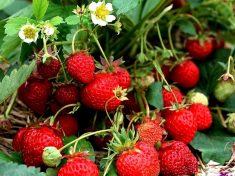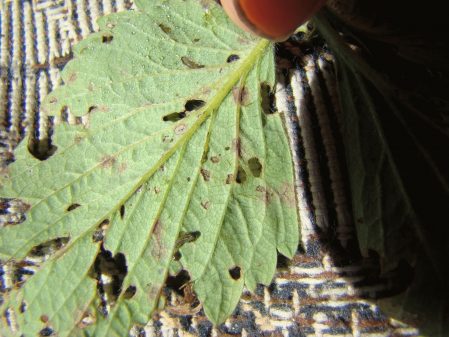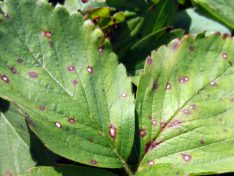Strawberries are a tasty and healthy berry that grows in almost every household plot. The dream of gardeners to become owners of rare varieties with excellent taste and good yield. It is easy to grow varietal strawberries from seeds to create the coveted strawberry plantation.
Material Content:
- 1 Types and varieties of strawberries for growing from seeds
- 2 Selection of planting material and preparation of seeds for planting
- 3 Soil preparation and growing tanks
- 4 How to care for seedlings and seedlings of strawberries
- 5 Planting strawberries in open ground
- 6 Garden strawberry care
- 7 The main problems when growing
Types and varieties of strawberries for growing from seeds
In the shops you can find a large assortment of wild strawberry seeds - large-fruited, small-fruited, curly, remont and even yellow.
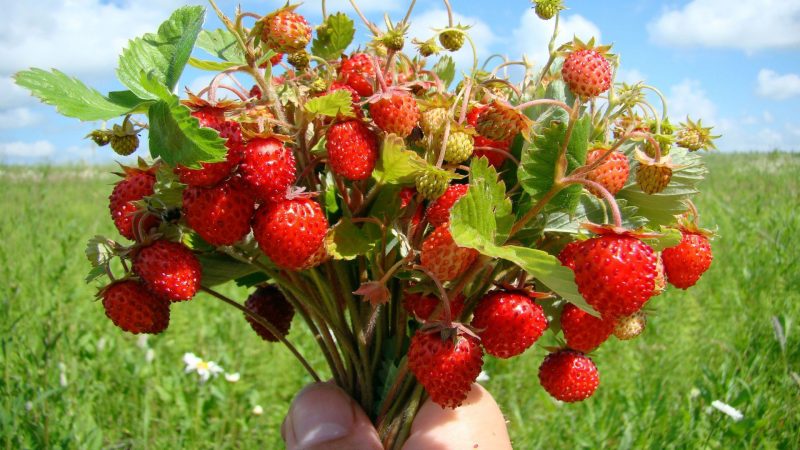
Popular varieties for seed propagation:
- Queen Elizabeth - a very productive remontant strawberry with large berries;
- Temptation F1 - ampelous large-fruited strawberries;
- Yellow miracle - remontant, with yellow fruits;
- Regina is a large-fruited remontant culture that does not give a mustache;
- Alexandria is small-fruited.
Growing strawberries from seeds is very beneficial.
One bush of a large-fruited repairing variety costs about 80 rubles. Several bushes can be obtained from the seed pack.
Selection of planting material and preparation of seeds for planting
Strawberry seeds do not require special preparation for planting - if they are fresh, they will sprout in favorable conditions a few days after sowing.
Repairing varieties of wild strawberries, when sown with seeds in March, will have time to give the first crop at the end of summer. If the varieties are not remontant, the berries will appear only in the second year after planting.
Dates of planting strawberries seeds for seedlings
Strawberries are advised to sow seeds in January or early February to get the first berries in the year of planting.
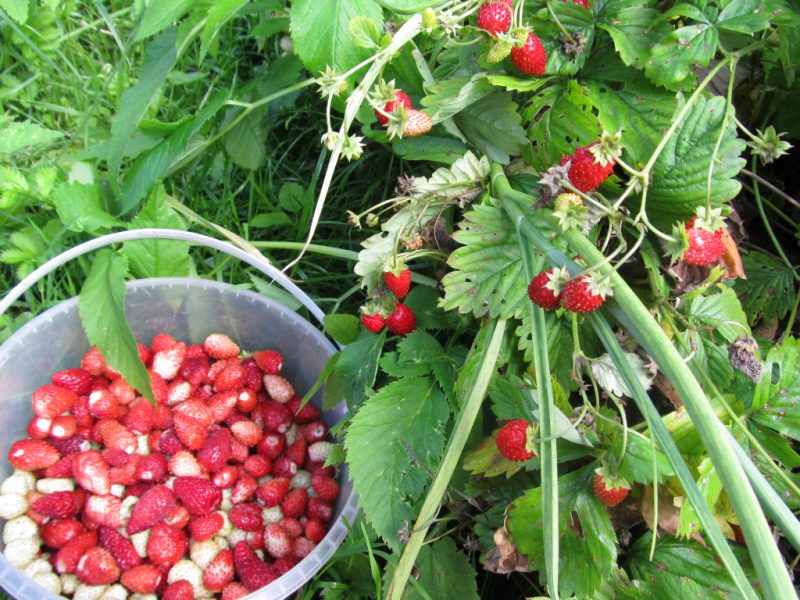
Difficulty may arise with the need for backlighting, since in winter there is a short daylight hours. If there is no possibility for illumination, sowing is carried out in March.
Sowing strawberries in the garden can be done directly in the open ground.
- To do this, in May they prepare a garden bed, level it and add compost or purchased land.
- Seeds are poured superficially, without deepening, watered the bed before sowing.
- From above, the sown seeds are covered with a film or a plastic food box, which is pressed with stones so that it is not carried away by the wind.
In open ground, seedlings always grow strong, as they receive an abundance of sun and heat.
Soil preparation and growing tanks
For such small seeds as strawberries, the soil must be of very high quality.
You can buy "TERRA VITA Living Earth" - soil that is well permeable to air and water.
A container for sowing strawberry seeds needs a low. You can use plastic with a food cover. At the bottom of the landing tank, holes must be made to drain excess water.
Rules for sowing seeds in a container and peat tablets
Having poured the earth into a container, it is watered with water or a Fitosporin solution for disinfection. Strawberry seeds are poured out of the bag onto a white sheet of paper, and gently distributed with a toothpick in a planting container.
It is not necessary to deepen and sprinkle seeds with earth.
An interesting way to sow seeds in the snow, allows you to see how far they fell into the ground. For such sowing, snow is poured into the tank on top of the prepared soil, leveled and sown. When the snow melts, the seeds will be drawn into the soil. They will not be buried and will rise well.
Sown seeds are covered with a transparent lid and placed in a warm place on the windowsill. When the first sprouts appear, they should immediately receive light. At a temperature of + 25 ° C, the seeds germinate after about a week.
Planting strawberries with seeds in peat tablets is also very convenient.
- To do this, buy tablets with a diameter of 24 to 33 mm and soak in water with Fitosporin so that they swell. The remaining moisture is drained.
- Strawberry seeds are laid out in the recesses of the tablets, without sprinkling anything on top. You can do this with a toothpick.
- The container is covered with a film to create greenhouse conditions, and placed in a warm, bright place.
- Regularly spray the crops from the spray gun and ventilate so that condensation does not accumulate.
How to care for seedlings and seedlings of strawberries
When the seedlings hatch, they need good lighting for growth. If the weather is bad, the seedlings are illuminated with fluorescent lamps.
In addition to light, seedlings need watering. They are sprayed from a spray bottle with room temperature water.
Picking seedlings
After the appearance of two leaves, the seedlings are transferred with two toothpicks to a separate container. The pick occurs when the sprouts are still very small, this allows you to bring a minimum of damage.
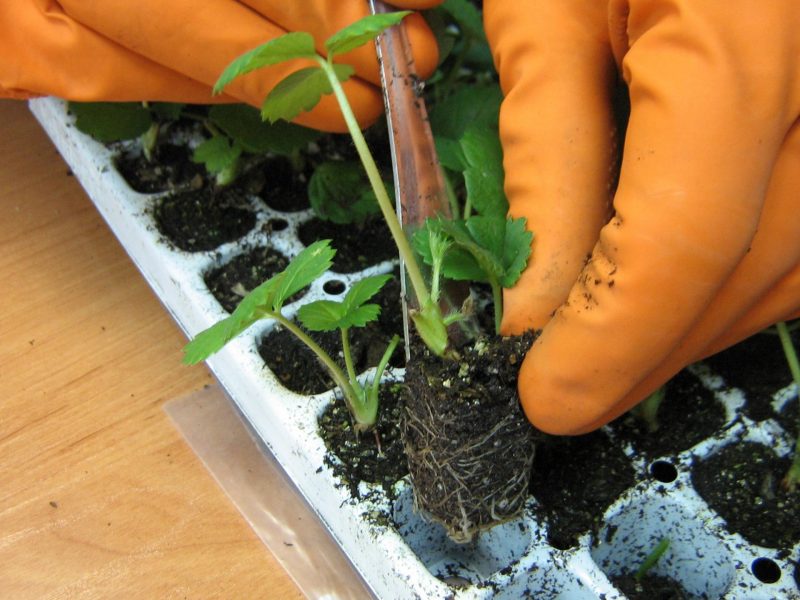
With early transplantation of seedlings into separate small containers, they will not compete in the struggle for light and living space, they will be able to develop normally.
With good lighting, the strawberry seedlings will grow strong and healthy. Seedlings need to be fed after the appearance of the third real leaf. For feeding, you can use humic fertilizers or Fertiku plus.
Planting strawberries in open ground
When the seedlings planted with seeds grow, it will not be very large. In May, when the weather is stable and warm, small seedlings can be transplanted into the ground. By this time, 2-3 pairs of real leaves should appear on them.
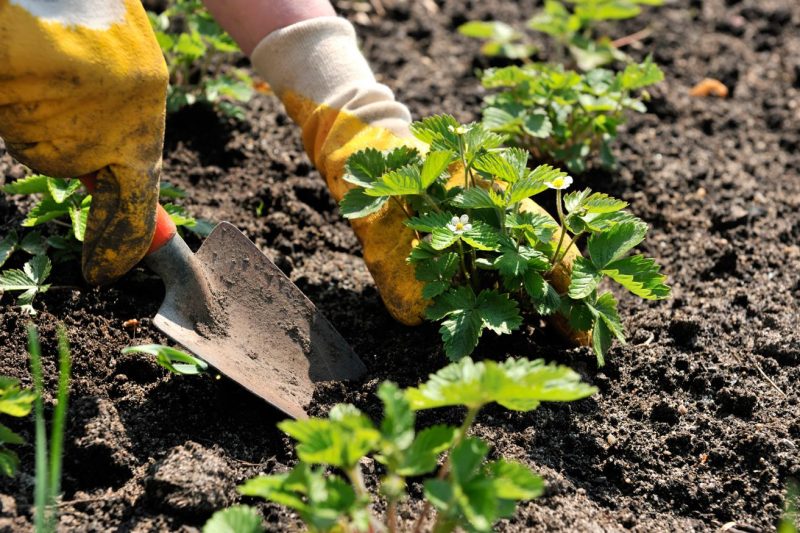
A well-lit area is allocated for planting in the garden.
It is freed from weeds and leveled. Add rotted compost or TERRA VITA purchased soil to the soil.
Seedlings are planted on a prepared, watered bed, observing the following procedure:
- On a bed, rows are marked with a shallow furrow with a stretched cord. The distance between adjacent rows is about 40 cm.
- On the resulting rows make small holes at a distance of 25-30 cm from each other.
- Seedlings are placed in the wells without destroying the earthen lump around the roots.
- Gently fill the hole with earth, making sure that the point of growth of the strawberries remains above the surface of the earth.
- Lightly compact the soil, and watered with settled water from a watering can, trying to ensure that water does not fall on the leaves and does not erode the soil.
At first, it is advisable to protect the seedlings from direct sunlight until they take root in a new place.
Garden strawberry care
When caring for young strawberries, timely watering, top dressing, protection from pests and diseases, weeding and regulating mustache growth is important. The soil around the bushes is loosened and mulched with sawdust or straw to prevent evaporation of moisture.
- Before the onset of winter cold, in autumn, all damaged, dry leaves and newly formed mustaches are cut off from the strawberries, leaving only a few healthy leaves.
- The next year, when the snow melts, the plantation is cleared. Remove dried leaves and last year's antennae with secateurs. For prevention, spraying with Bordeaux fluid is carried out.
- In May, strawberries throws a lot of mustache. To increase the yield, it is desirable to cut them, because they consume a large amount of nutrients. If strawberries are grown for seedlings, remove the peduncles on which the berries are tied. Mustache will grow strong and root better.
- Varieties of strawberries that continue to bear fruit in the summer, it is advisable to shade from the hot summer sun. To do this, tall plants are planted next to strawberries or a net is pulled on top.
Watering and fertilizer
In the spring, when the snow melts, they loosen the soil and sprinkle the bushes of strawberries, raking the ground under the plants. Water the garden by adding urea, ammonium nitrate or a complex fertilizer intended for strawberries to the water. A matchbox of urea is bred into 10 liters of water.
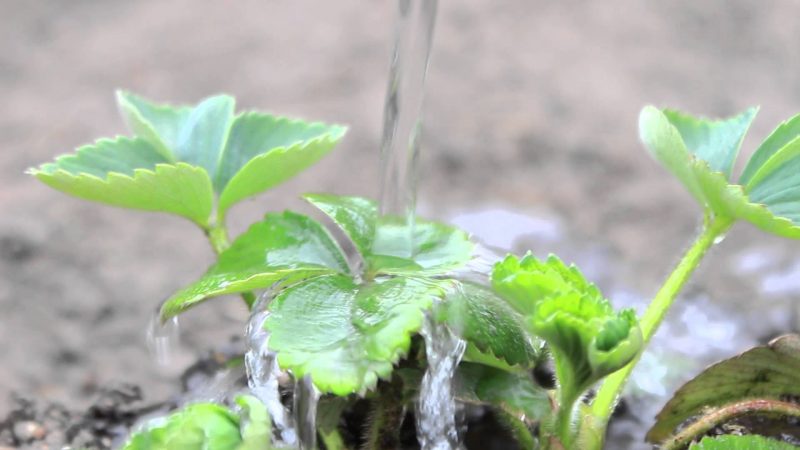
Often in May days it is very hot, and strawberries require watering. It is necessary to water it after harvesting, otherwise the fruits will turn out watery and tasteless.
Before flowering, in the spring, make three dressings with an interval of 2 weeks. Fertilizing fertilizers with water must be strictly according to the instructions for the drug, so as not to burn the roots of the plant. Fertilize strawberries only on moist soil, after watering.
Diseases and pests, methods of dealing with them
The first treatment of strawberries from fungal diseases is carried out immediately after the snow melts. To do this, spray bushes with Bordeaux liquid or a fungicide solution.
In early May, they do the final treatment against insect pests, so that by the beginning of flowering and fruiting, in 2 or 3 weeks, the chemicals decompose into harmless components. Early varieties of strawberries begin to bear fruit in the third decade of May.
After fruiting, at the end of June, all diseased leaves, the remnants of fruiting and an extra mustache are cut off. During this period, it is possible to re-treat pests and diseases, if the variety is not repair.
Strawberry propagation methods
Strawberries are propagated by seeds and seedlings. Saplings are bought in a store, obtained by dividing adult strawberry bushes during an autumn transplant, or grown from mustache. In late spring, wild strawberries begin to actively release them, and at the end of each rosette of leaves grow. With their help, you can propagate all varieties, except for bezosy.
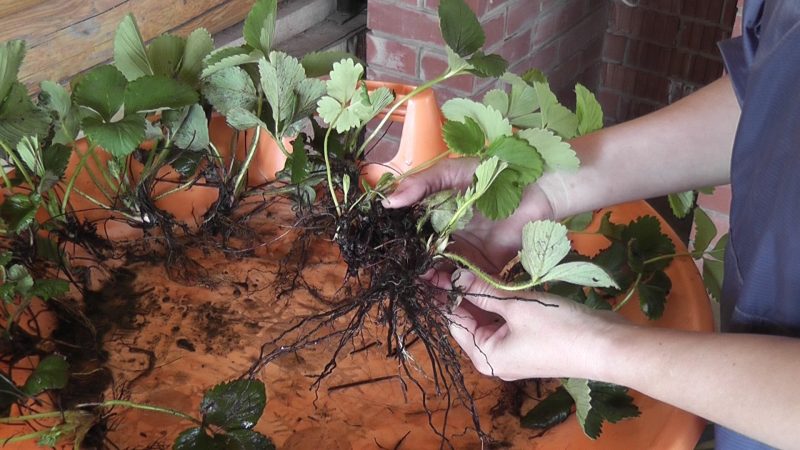
On one antennae there can be several sockets growing sequentially one after another. The first to the mother bush is called a first-level outlet. In order to get strong seedlings, only the first-level outlet is left, cutting off the antennae after it. Until the outlet is rooted, it is not separated from the mother plant, pressed to the ground and fixed.In two weeks, it will grow good roots, it can be cut and in the autumn plant a new bush in a permanent place.
The main problems when growing
In the spring, wrinkled and deformed leaves can be seen on strawberries - these are signs of a mite that wakes up in April. It is impossible to notice the insect with the naked eye. Affected strawberry bushes must be treated with Fitoverm, Aktellik or another acaricide.
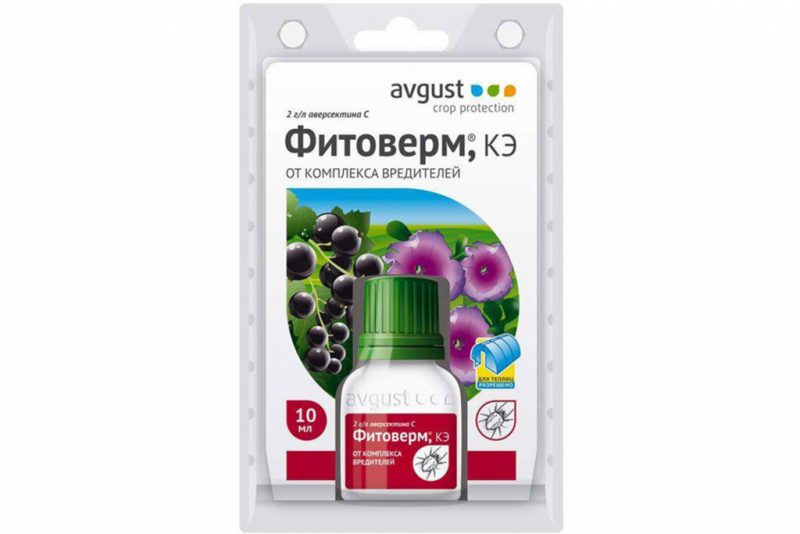
Remanent strawberries require special care. Top dressing should be applied regularly, weeding, loosening the ground, watering in time and removing the extra mustache. It is advisable to make a raised bed - it will be warmer, compared with the ground level on cold autumn days, when the strawberries still bear fruit.


